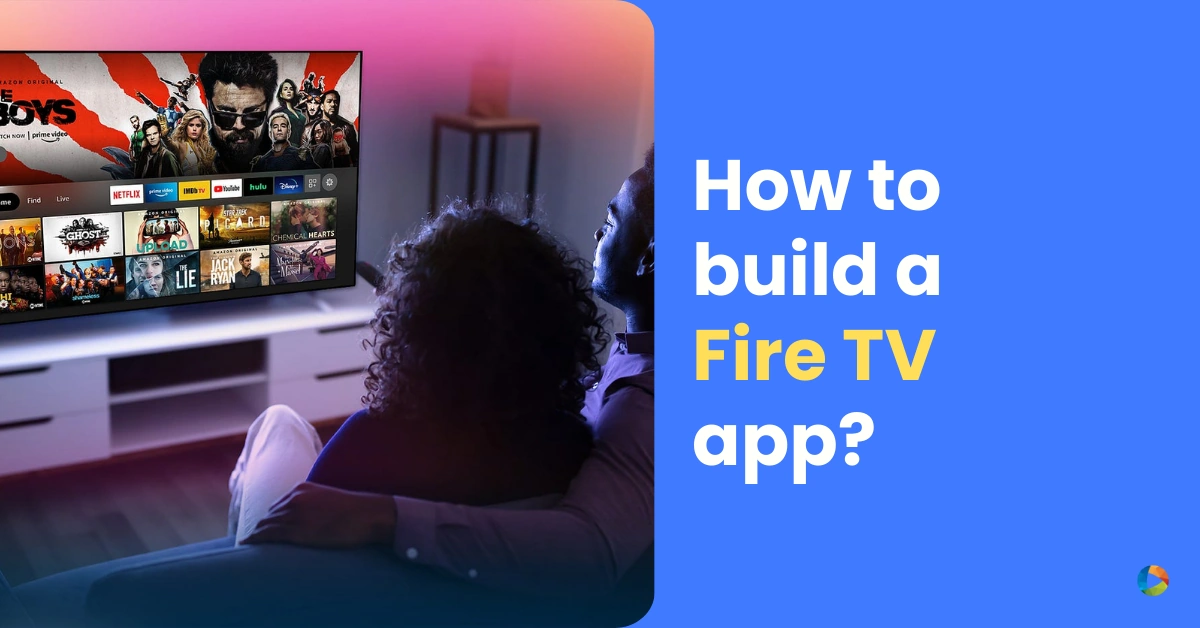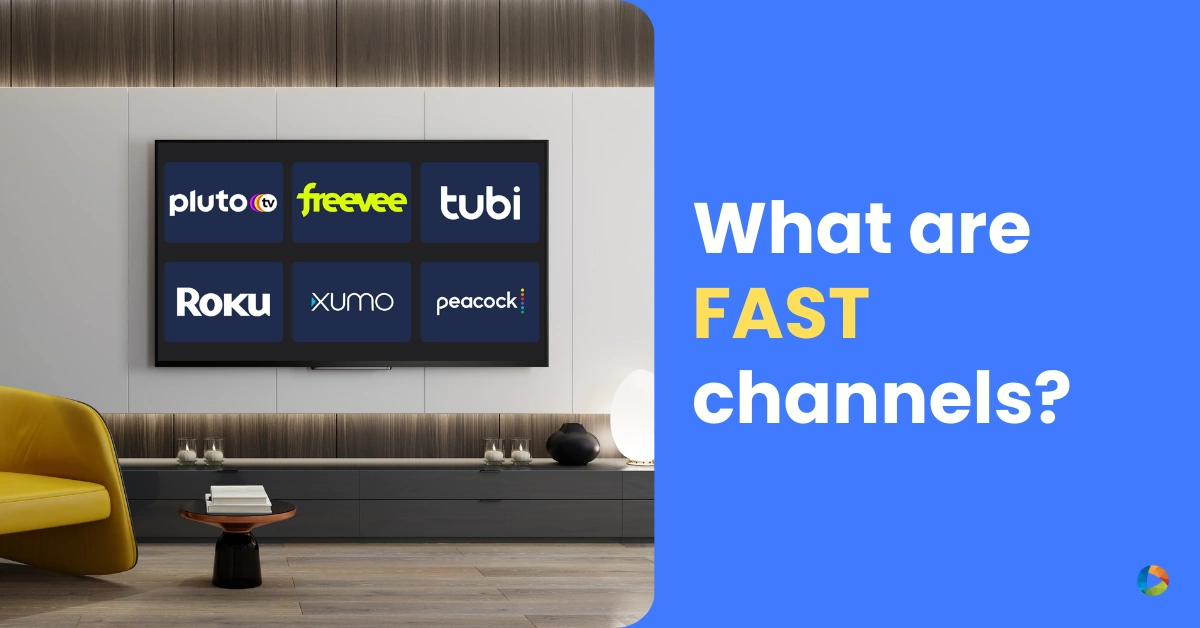OTT App Development: The Ultimate Guide
Last Updated on May 27, 2025 by Anjana Devi
OTT platforms began in the early 2000s when faster internet and better video compression allowed content to be streamed over the Internet. At first, OTT services were only available on desktop computers, and users had to download large files to watch anything. But as internet speeds improved and mobile technology advanced, streaming evolved to allow real-time playback without the hassle of downloads.
The mid-2000s saw the launch of game-changing platforms like Netflix, Hulu, and Amazon Prime Video. They capitalized on the growing need for convenient, on-demand entertainment. Netflix, in particular, transformed the industry by moving from a DVD rental service to a streaming powerhouse, offering a massive library of content, including its own original productions.
This shift marked a significant turning point in the OTT landscape, paving the way for the booming streaming industry we see today.
What were people’s options for watching their favorite shows in the past? There was only one television, and the entire family sat and watched the same stuff.
People soon had the opportunity to watch their favorite videos with their computers on websites like YouTube, thanks to the internet.
Boom! Everything changed after that, with the advent of mobile phones. People did, in fact, transfer from their televisions and computers to their phones to watch their favorite shows.
Slowly, people started enjoying the freedom of watching what they like without anyone’s interference. The only stumbling block was limited and slow internet connection
Today, with the advancement of technology, streaming has become the most common method of consuming videos.
Did you know that the average person spends more time on OTT apps than driving, socializing, or other pastime pursuits?
So if you want to develop OTT apps or know more about them, this guide will help you.
Let’s begin.
What Are OTT Apps?
OTT, or over-the-top, enables viewers to stream premium content directly over the web, without the use of cable or satellite TV.
These apps allow users to stream content on-demand, providing a flexible and personalized viewing experience across various devices such as smartphones, tablets, smart TVs, and computers.
Take Netflix,. You can watch Netflix on your computer, mobile (Android and iOS), and Smart TV devices (Roku, Android TV, Samsung TV, etc). Netflix has developed native apps for all these platforms and all these apps are called OTT apps.
This is because Netflix realized that developing OTT apps is the most powerful approach to reach its target audience.
If you have great content to give your audience, no medium is more potent than OTT.
How It Works?
Content creators upload their videos to their CMS (Content Management System)
The uploaded content is encoded and transcoded into various formats and resolutions to ensure compatibility with different devices and network conditions.
The processed content is stored on servers, often in the cloud, for scalable and secure storage.
Video delivery involves breaking down the video into small chunks, which are streamed in real-time to the user’s device.
Adaptive streaming ensures that the video quality adjusts dynamically based on the user’s internet speed, providing a seamless viewing experience.
Also, a CDN is used to distribute the content globally, ensuring fast and reliable delivery by caching content in multiple locations closer to users.
Why Are OTT Apps Important?
Are you spending more or less time watching videos online, compared to, say, 5 years ago? What about your friends?
As you might have guessed, the usage of OTT apps and the online video industry is growing exponentially. Millions of people have reduced the usage of cable and satellite TV and are spending more time watching videos over the internet, on their PCs, mobile devices, and Smart TV’s.
Here are 4 reasons why you should launch OTT apps:
Gain more viewers
The number of OTT users globally is forecasted to reach 4.22 billion by 2027. This means more than half the world’s population will be using OTT services
The amount of time Americans spend streaming OTT services has grown significantly, from 44 minutes per day in 2018 to 70 minutes per day in 2022. And today in 2024 an average American spends three hours and nine minutes a day streaming digital media.
OTT apps break down geographical barriers, allowing your content to reach viewers worldwide. Unlike traditional media, which is often limited by regional licensing and distribution agreements, OTT apps leverage the internet’s global reach to attract a diverse and expansive audience.
This can significantly increase your viewer base, as anyone with an internet connection can access your content, regardless of their location.
OTT apps provide an excellent platform to cater to niche audiences that may be underserved by mainstream media.
Whether your content focuses on specific genres, interests, or cultural topics, OTT apps allow you to target and engage with these niche markets effectively. This specialized approach can build a dedicated and loyal viewer base that is highly engaged with your content.
Make More Money
OTT has simplified Video Monetization in so many ways.
You have multiple Video Monetization options – subscriptions, transactions, and advertisements.
The OTT video segment is expected to generate a staggering $316.10 billion USD in 2023. This figure alone shows the massive financial opportunities within this space.
Looking ahead, the market is set to grow at an impressive Compound Annual Growth Rate (CAGR) of 10.01% from 2023 to 2027, reaching an incredible $462.90 billion USD by 2027.
Despite the rising popularity, there is a cap on what Americans are willing to spend. About 59% of Americans won’t pay more than $20 a month for streaming TV services, and 75% won’t pay over $30 a month. This insight is crucial for pricing strategies.
OTT video advertising is also on the rise, with projected market volume hitting $205.10 billion USD in 2023. This indicates a shift in advertising dollars from traditional TV to OTT platforms.
Ad marketers too are drifting from traditional entertainment platforms to OTT platforms to capitalize on better ad targeting.
You can implement subscription-based models, where users pay a recurring fee to access your content. Advertising-based models allow you to monetize through ads shown to viewers, while pay-per-view models enable users to pay for individual pieces of content. This diversity in revenue streams ensures you can maximize your earning potential.
Moreover, your OTT platform can enhance your revenue opportunities through upselling and cross-selling. For example, you can offer premium content or exclusive features as part of a higher subscription tier, encouraging users to upgrade.
Additionally, you can cross-sell related merchandise, event tickets, or even partnerships with other services, further boosting your revenue.
Lower Cost
It’s far cheaper to launch your OTT service than launching a cable/ satellite TV channel.
With OTT, you don’t need to pay uplinking and downlinking charges, carriage fees, content delivery fees, distribution fees, and more. You save hundreds of thousands of dollars every month!
There are only 2 types of costs if you use an OTT SaaS platform like Ventuno: :
- Fixed cost – platform fee (paid monthly/ yearly)
- Variable cost – streaming, storage, encoding, API calls, depending on consumption.
Direct Relation With Viewers
With OTT, there is no middleman between you and your viewers.
Viewers can directly watch your content on their OTT devices without subscribing to cable or DTH services. This gives you full control over distribution – you can reach viewers all over the world!
Another benefit of OTT is that you receive payments directly from your viewers. No need to wait for a middleman to pay you. Just integrate your preferred payment gateway to get paid.
You already have the email and phone numbers of your users. You can now reach them directly. Want to inform them of new releases or any discounts? Just send an email or SMS!
Suggested read: Why are broadcasters are moving to OTT ( and why you should too)
Multiple Options for OTT App Development
When it comes to developing an OTT app for your streaming service, you have three main options: .
- Building it in-house
- Outsourcing it
- Using a SaaS OTT platform (recommended)
Each option has its own set of pros and cons, and the best choice depends on your specific needs, resources, and goals
Option #1: Building it in-house
The first option is to hire developers and build the OTT apps yourself.
This option is suitable only for those who have serious resources, money, and expertise in app development.
Why? Because building an OTT app is not as straightforward as building any other app. There are a lot of features of an OTT service that makes it complicated.
To launch a fully functional OTT service, you need to think and plan for the following things:
- Hiring mobile developers who build and maintain 9+ different apps (across web, mobile, and TV)
- video CMS to upload and organize videos
- storage and CDN to store and stream videos
- encoder to encode videos in different formats
- integrating payment gateways to collect payments
- ad-server to run advertisements
- dashboard to view analytics
- servers to scale when traffic spikes
and more.
Most content producers neither have the money nor the expertise in hiring and managing developers.
If you have decided to build the apps in-house, we recommend hiring for the following roles:
- Backend developer – 2 or 3
- Front end developer – 1
- Product manager – 1
- Android developer – 2
- iOS developer – 2
- Smart TV developers (across 6 platforms) – 5 to 6
- DevOps engineer – 1
- Designer – 1
- Testers – 2
Don’t forget that you will still need developers and testers for maintenance after the launch. You will be constantly adding new features, resolving bugs, and updating the apps on the stores.
Pros of Building Your OTT Platform In-House
1. Complete Control: You have full control over the development process, allowing for customization and flexibility to meet your specific needs.
2. Team Communication: Easier communication and coordination among team members, leading to potentially faster decision-making and problem-solving.
3. Intellectual Property: All intellectual property, including source code and designs, is owned by your company.
Cons of Building Your OTT Platform In-House
1. High Costs: Hiring skilled developers, designers, and project managers is quite an investment. Additionally, you’ll need to invest in the necessary technology and infrastructure.
2. Time-Consuming: Building an OTT app from scratch can be a lengthy process, potentially delaying your time to market.
3. Risk of Delays: In-house teams may experience unexpected challenges and delays, particularly if they do not have prior OTT app development experience.
Option #2: Outsourcing it
The second option is to outsource the development of your Video on Demand (VOD) app.
There are so many app development companies out there. In fact, there are a few companies that specialize in OTT app development.
These companies build OTT apps from scratch for each of their clients. They charge a one-time development fee for each project.
After the apps are developed, they will share the source code with you and move on to the next project. You are now responsible for the maintenance!
What does maintaining an OTT app mean? You need to have a team of web & mobile app developers and testers who will be fixing bugs, adding new features, and updating the apps on a regular basis.
We do not recommend this option as you would still need to hire a team for maintenance and updating the apps. Most content producers don’t have the money or knowledge to maintain OTT apps. You are better off with a No-coding OTT platform that can be managed without developers.
Pros of Outsorcing the Development of Your OTT Platform
1. Faster Time to Market: An experienced development partner can accelerate the development process, helping you launch your app more quickly.
Cons of Outsorcing the Development of Your OTT Platform
1. Less Control: Limited control over the development process and potential communication barriers.
2. Quality Concerns: Risk of variability in quality if the development partner does not meet your expectations.
3. Maintenance: You need to hire developers and testers need to be fixing bugs, adding new features, and updating the apps on a regular basis.
Option #3: Using a SaaS OTT platform (recommended)
Building OTT apps in-house takes serious time and money. At the same time, you will still need to have a development team to maintain the apps if you go with option #2.
You can overcome both these challenges with option #3. All you need to do is find a SaaS OTT provider who has all the features you are looking for, provides great support, and is reasonable with their pricing.
In a nutshell, choosing a SaaS OTT platform is the most affordable and time-efficient way to get your hands on an OTT app.
Benefits of using a SaaS OTT platform like Ventuno:
- Launch your apps quickly
- Fully white-labeled
- Zero upfront costs – just pay a reasonable monthly fee
- No need to hire developers
- No maintenance overheads
- Cancel anytime
This way, you can focus on what you are great at – creating awesome content!
Ventuno handles all the above things for you. You get a readymade platform that can be used to launch, manage, and monetize your OTT service – without any coding!
Pros of Using a SaaS Platform to Build Your OTT Apps
1. Quick Deployment: SaaS platforms offer pre-built solutions, allowing you to launch your OTT app much faster than building it from scratch.
2. Cost-Effective: Lower upfront costs since you don’t need to invest heavily in development and infrastructure. SaaS platforms typically operate on a subscription basis.
3. Scalability: Easily scalable to accommodate growing user bases and content libraries without the need for significant additional investment.
4. Maintenance and Updates: The SaaS provider handles maintenance, updates, and security, allowing you to focus on content and user engagement.
5. Customization: SaaS platforms like Ventuno offer customization options to tailor the app to your brand and specific needs.
We have compared the 3 options below
Suggested read: – In-house development vs using a SaaS OTT platform
How Much Do OTT Apps Cost?
There are three types of costs involved:
- Development costs
- Maintenance costs
- Variable costs – CDN, encoding, servers, etc
The cost for all the 3 options are different:
In-house development
Development cost – Very costly. You would need at least $100,000 in salaries for web & mobile app developers, product managers, QA’s.
You would also need to invest serious money in developing or integrating the technology that will power your OTT service (video platform, player, ad server, CDN, servers, payment gateway).
Maintenance cost – Very costly. You will need to have at least 5 web and mobile app developers and testers for maintenance.
Outsourcing it
Development cost – Costly. The vendor will charge a one-time development fee. The fee can range from anywhere between $15000 to $100,000
Maintenance cost – Very costly. You will need to have 5+ developers and testers for maintaining and updating the apps.
Using a SaaS OTT platform
Development cost – Low. Usually, SaaS platforms don’t charge a setup fee for launching your OTT apps.
Instead of a huge one-time fee, you will be paying a reasonable platform fee every month. The platform fee can range from anywhere between $500/ month to $5000/ month, depending on your requirements.
Maintenance cost – Low. You don’t need a separate team of developers to maintain the apps after the launch. SaaS platforms will provide a dashboard where you can manage your entire OTT operations – right from uploading, encoding, organizing, video monetization, and analyzing your users, content, and monetization.
Again, there are no separate fees for maintenance. Maintenance is covered in the platform fee that you pay every month. Check out Ventuno’s pricing to get a better understanding. You get an end-to-end OTT SaaS solution to manage your OTT business.
Variable costs
In all the 3 options above, there is also a third type of cost – Variable costs.
Variable costs are the costs that depend on usage. Typically, these are the variable costs for an OTT service:
Bandwidth: You will be using a CDN to stream your videos. The CDN vendor will charge you for the amount of data streamed by all your users. The most common CDNs for streaming videos are Amazon and Akamai. Check out Amazon CloudFront’s pricing here.
Storage: You will be storing the videos in cloud storage such as Amazon S3. They will charge you for the amount of data that is stored on their servers. Check out Amazon S3’s pricing here.
Servers: These are the servers on top of which you will be building the platform. Make sure to use auto-scalable servers that scale automatically when the usage spikes.
Encoding: Your video needs to be converted to multiple bitrates to support adaptive bitrate streaming. The process of converting the video from one format to another is called encoding. You will be charged for the amount of data that is encoded.
2 Factors to Consider When Developing or Choosing Your OTT Platform
Intuitive User Interface and User Experience
Your OTT app must have an intuitive and user-friendly interface. This means that users should be able to navigate the app effortlessly, find content quickly, and have a seamless viewing experience.
For this, your app must have a clean layout, easy-to-read fonts, and a consistent color scheme that aligns with your brand. An intuitive UI/UX reduces user frustration, increases engagement, and encourages longer viewing times.
In order to enhance the user experience, personalization is crucial. Features like customizable watchlists and user profiles cater to individual preferences and keep users engaged.
Content Management System (CMS)
A strong CMS is the backbone of any OTT app. It should allow easy uploading, editing, and organization of content.
Key features include metadata management, support for various video formats, and robust tagging capabilities to ensure content is easily searchable and well-organized.
A good CMS also provides tools for managing user permissions and content scheduling, which are essential for maintaining an up-to-date content library.
The CMS should make your job simple by making it easy to upload and manage your videos. This includes bulk uploading capabilities, automated encoding, and to different resolutions.
WHICH OTT APP SHOULD YOU LAUNCH FIRST ?
Sometimes, it might become confusing to decide which apps to launch first.
After all, there are so many different platforms where you can build native apps.
The best option? Launch all these apps simultaneously! Different people consume videos on different devices. Some prefer Apple over Android. Some use Chromecast while some have Amazon Fire Stick. The best way to reach out to all the potential viewers is to launch all these apps.
However, if you don’t want to go all-in, we suggest launching any 2 apps that are used by your viewer the most.
Are your viewers mostly in the US? You can start with iOS and Roku as these are the two most commonly used platforms in the US.
Are your viewers mostly in India? You can start with Android and Android TV.
Are you a fitness creator? Start with a website and mobile apps. Most viewers consume fitness videos on the laptop and phones.
There are so many other factors to decide the answer to this question. It depends on a lot of factors such as the location of your viewers, the category of your videos, your budget, your content quality, and more.
Check out our detailed article on this topic: Which video streaming app should you launch first?
How to Find the Perfect OTT Provider?
Assuming you have decided against in-house OTT app development, the next step is to find a vendor to develop the apps.
Between outsourcing the development and using a SaaS platform, we suggest going ahead with a SaaS platform as they are inexpensive and easy to maintain.
Moreover, it also gives you the same advantages as if you were building the app from the scratch.
Finding a SaaS OTT provider is not easy. You need to make sure the platform is easy to use, has all the features you are looking for, and is within your budget.
We have created a checklist for you to find the perfect OTT provider:
- Do they provide an all-in-one platform? Or do you need to use 2-3 separate platforms?
- Are they able to launch all possible apps (web, mobile, TV)?
- How long does it take to launch the apps?
- How easy it is to use it? Do you need mobile app developers for maintaining it?
- Can it handle millions of users?
- How good is their support?
- What’s their pricing? Any hidden charges?
- Do they accept custom feature requests?
This checklist is not exhaustive. You can add more questions based on your unique requirements and use them to compare different OTT vendors.
Reach out to our team if you are planning to launch your OTT apps. You will get an all-in-one platform for managing your entire OTT operations – right from uploading, organizing, monetizing, and analyzing videos.
Suggested read: The ultimate guide to SVOD in 2020
FAQ
Quick Deployment: Pre-built solutions allow for rapid launch.
Cost-Effective: Lower upfront costs with subscription-based pricing.
Scalability: Easily scalable to accommodate growing user bases.
Maintenance and Updates: The provider handles ongoing maintenance, updates, and security.
Customization: Many SaaS platforms offer options to tailor the app to your brand.
A successful OTT app must have intuitive navigation, personalized recommendations, and a responsive design that adapts to different devices. It should also support accessibility features like subtitles and multiple language options.
The main monetization models for OTT apps are subscription-based, advertising-based, pay-per-view, and hybrid models that combine different approaches.
When choosing a technology stack, consider factors like scalability, performance, cost, and compatibility with various devices and platforms.
Developing an OTT app in-house typically costs around $100,000 or more. Outsourcing can range from $15000 to $100,000. While using a SaaS OTT platform generally involves subscription fees between $1,000 and $5,000 per month.
Conclusion
Traditional TV is expected to see a decline, with global revenue shrinking at a -0.8% CAGR, from $231 billion USD in 2021 to $222.1 billion USD by 2026. This shift underscores the move away from traditional media to OTT platforms.
This is the perfect time to launch your OTT apps, attract users, and monetize them with ads, subscriptions, and transactions.
Reach out to us for developing your OTT apps. Our SaaS OTT platform has all the features needed to launch a fully-functional OTT service – video platform, player, servers, CDN, ad-server, payment gateway, and analytics.
What are your thoughts on this article? reach out to us at info@ventunotech.com if you would like to discuss!
Looking to launch your streaming app?





